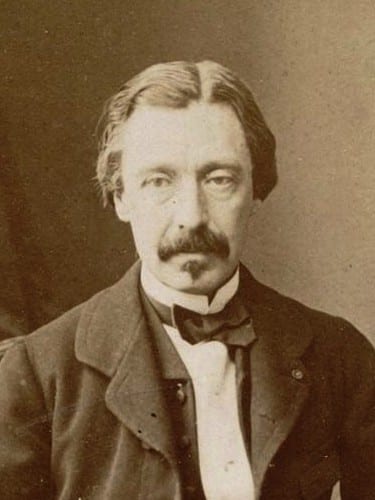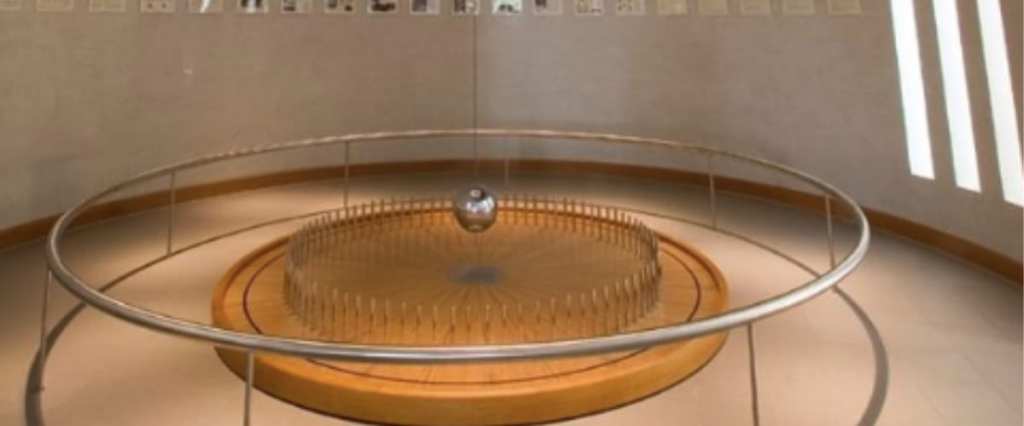It’s unsurprising, really, that people used to think the earth was flat. To the untrained (regular) eye, it feels like we live on a flat, motionless surface that stays safe and stationary underneath a spinning sun and stars. If someone came along and told you (the hypothetically scientifically illiterate) that you lived on a giant sphere 8,000 miles in diameter that spins at 1,000 miles per hour as it orbits the sun at 67,000 miles per hour, you might call them nuts.
And yeah, the first people to posit the rotation of the earth and gravity and the whole round thing were called that and much, much worse.
The man who proved it, though, was a 32-year-old dude who had dropped out of medical school.

Image Credit: Wikipedia
Jean Bernard Leon Foucault grew up in Paris in the early 19th century. He didn’t excel in school, wasn’t social, and probably disappointed his parents (or at least his mother, who pushed him into medical school, where he learned he fainted at the sight of blood).
Despite his lackluster academic record, science and engineering called his name, and he landed a job as a lab assistant and got in on the ground floor of the early photography game – he took the first picture of the sun. He also devised a way to measure the speed of light and figured out that that it traveled more slowly in water.
It was 1850, so, you know. That’s all pretty impressive on its own.
Ok, here’s the deal with the Earth’s rotation.
If you watch the sky long enough, you can see that the stars appear to move in circles around aline that matches up with the Earth’s axis, so astronomers had always know something was turning. Until the 17th century, people believed the stars were attached to a sphere that rotates around the earth, though some scientists (Bruno and Galileo) did propose it was the Earth that was moving.
They were killed and imprisoned for their outside-the-box thinking.
By the 1850s, when Foucault was working and thinking, most educated people believed Galileo was right, but no one had been able to come up with a visual demonstration to prove it.
https://www.instagram.com/p/BshF3spl4oN/
That is, until Foucault had a stroke of genius in 1851 and realized that if he could hang a pendulum in a way that gave it total freedom of movement, it would prove what happens when the Earth rotates.
Imagine you’re standing at the North Pole with a tall pendulum swinging from side-to-side over a pile of sand. If the earth is turning, then over the course of a 24-hour day, the pendulum will draw a line at every degree of a 360-degree circle.
Foucault knew, of course, that his theory would only work at the poles, so in order to devise how his pendulum would react at France’s latitude (or any given latitude), he conceived the sine law. He used it to complete his experiment, and to learn that the pendulum would turn 270 degrees every day near his home.
On February 2, 1851, Foucault sent this note to all of the scientists in Paris:
“You are invited to see the Earth turn.”
https://www.instagram.com/p/BsiCoFnFHJT/
The showed up, of course, and watched his pendulum do its thing. Within a few years he’d invented the gyroscope – another approach to observing the earth’s rotation. He’d also invented a device that kept his pendulum swinging day and night.
The snobby “real” scientists still kept him out of the French Academy of Sciences until 1865, three years before his death, but hey – his pendulums are still on display at museums and universities around the world, so I guess he got the last(ing) laugh.






